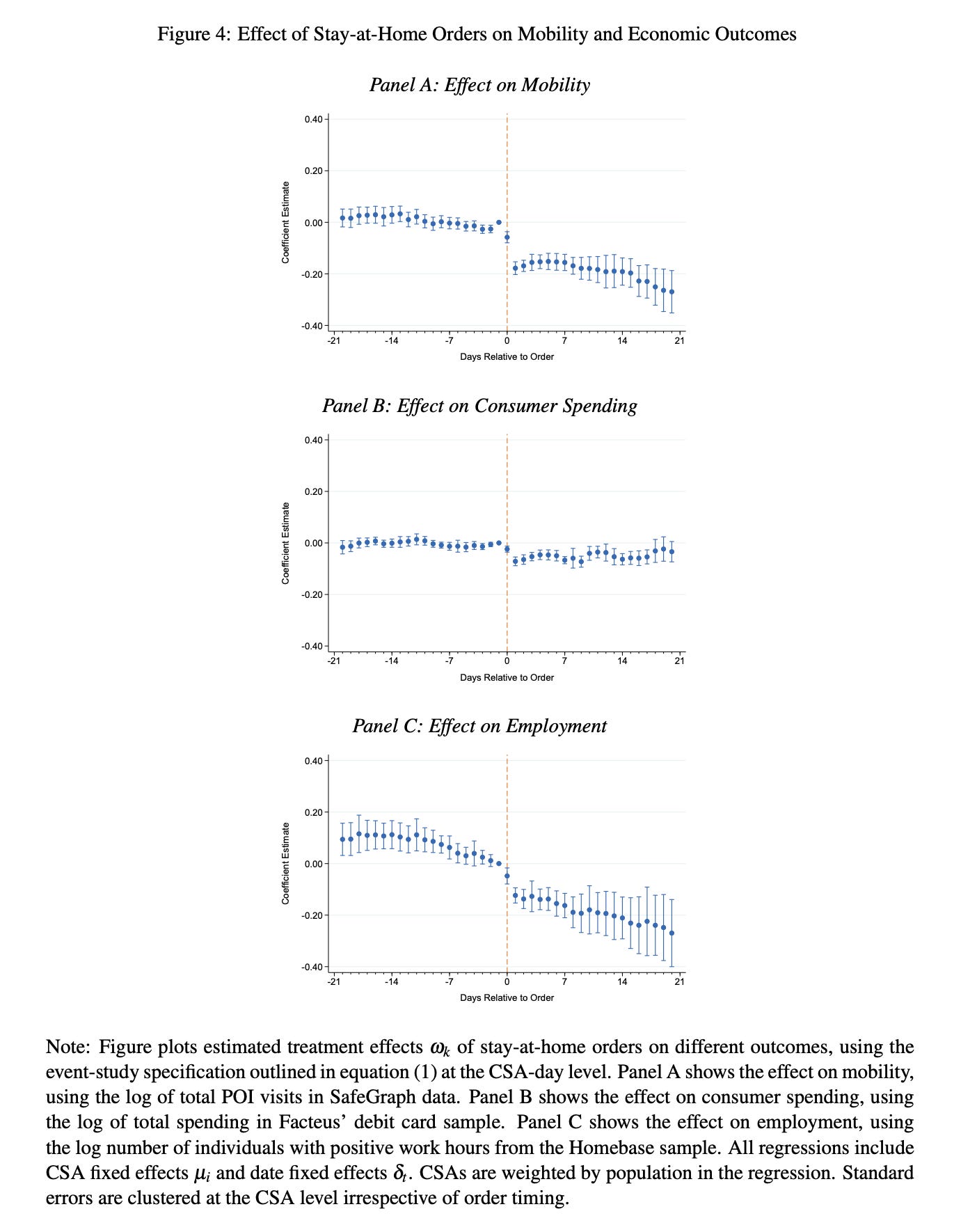Largely out of government control
Absent an information solution, people and the situations they live in determine the course of the pandemic
Welcome to Plugging the Gap (my email newsletter about Covid-19 and its economics). In case you don’t know me, I’m an economist and professor at the University of Toronto. I have written lots of books including, most recently, on Covid-19. You can follow me on Twitter (@joshgans) or subscribe to this email newsletter here.
Regular readers will recall that voluntary social distancing (and mitigation behaviour), as well as the structure of cities conceptually, play a large role in the overall prevalence of Covid-19. A recent paper by Hunt Allcott, Levi Boxell, Jacob C. Conway, Billy A. Ferguson, Matthew Gentzkow, and Benny Goldman now gives us evidence on both of these things.
Why is this important? There are a vocal set of people who currently advocate that governments largely do nothing in terms of interventions in order to manage Covid-19. Their logic is a combination of the economic costs from continued social distancing tailored with an endgame of achieving herd immunity without the assistance of a vaccine. Once achieved herd immunity puts us on a path to the eventual end of the pandemic. Evidence suggests that this will be achieved when 2/3’s of the population (evenly spread) has had Covid-19. And, of course, there’s lots of uncertainty about that still alongside the deaths and the potential permanent health costs associated with getting Covid-19. Ignoring those factors though, their base argument is that ‘letting it rip’ will reduce the overall length of economic harm significantly.
This argument is predicated on government action (or in this case inaction) being a way to reduce the overall length of the pandemic by accelerating the path to herd immunity. The new paper looks at the experience thusfar and concludes that simply cannot happen. They write:
We calculate that by mid-April 2020, the short run effects of stay-at-home orders accounted for only 16 percent of observed social distancing, 16 percent of observed reductions in economic activity (measured by small business employment), and 13 percent of the reduction in contact rate.
In other words, the actual government actions only accounted for a fraction of the impact on the economy. For the US, they calculate what this means:
Absent the observed policy response, there would have been 494,000 more confirmed cases by April 30th and 14,800 more deaths. Moreover, a uniform stay-at-home order implemented on March 17 would have resulted in 154,000 fewer cases by April 30th.
Thus, we can hold two things in our mind. First, the interventions actually did good and likely continue to do good. Second, they did not do much to prolong the total length of the pandemic.
Part of this was due to voluntary social distancing.

The other part depending on city structure — particularly, population density.

Now this is far from the final word on this issue. For starters, voluntary social distancing and population density will interact with one another — that is, I will do more to avoid contact when I am in close quarters with others than if I am not. But the paper does take into account this interaction. But it is also the case that the government interventions matter too and people will adjust their behaviour around those interventions.
What this means is that if we assumed that, say, the current rate of new daily infections in the US of 60,000 continued into the future sans any new government interventions, then to get to a point of 2/3’s of the US population (that is, 230m) infected, it would take about 3,666 days or a decade. And that is just herd immunity. It will take more time after that to end the virus and have people feel safe. We have only been at this six months. Suffice it to say, ‘let it rip’ doesn’t get us to normal economic activity any time soon.
That said, I would be remiss in saying that when you are starting for a base where the pandemic is under control, strong government intervention can matter as recent cases of Australia and Israel show. The latter came off a brief period in generating more cases per capita than anyone else. Hopefully, Israel can drive this out and don’t let the brake off too quickly.




